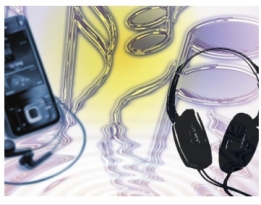A Big Leap - 3G to drive VAS revenues

-
For instance, SingTel has witnessed a 10 per cent rise in post-paid ARPU since the launch of 3G services in 2007.Similarly, for Maxis, the share of data services in total revenue increased after the launch of 3G services in Malaysia. In Indonesia too, operators witnessed a rise in ARPU and VAS revenue after the launch of 3G.
This trend is expected to continue. According to Juniper Research, rich media, made-for-mobile content and the increasing adoption of 3G data services will drive mobile entertainment revenues to $47.5 billion by 2010, with mobile music, games and TV accounting for $34 billion.
Traditionally, services such as ringtones and wallpapers have accounted for the bulk of mobile VAS revenue. But the usage patterns are now changing rapidly with the increasing availability of more sophisticated and attractive content as well as faster download speeds. With the rising adoption of new services, operators are focusing on scaling their infrastructure to meet the increased demand for bandwidth.
China and the Far East are currently the largest markets for mobile entertainment services, accounting for 41 per cent of global revenues. In India as well, the VAS industry will witness growth with the full-fledged launch of 3G services. The rapid growth in developing markets will result in the Asia-Pacific region retaining its lead in the mobile entertainment space till 2012.
In India, VAS currently accounts for 9-10 per cent of the operators' revenues. Research agency Gartner estimates that VAS revenues will increase to $5.5 billion by 2012 from $1.5 billion in 2007. Currently, of the over 400 million mobile subscribers in the country, only 10 million use their handsets for email and internet browsing.
The VAS offerings in the market comprise services that add value to voice calls, such as ringtones, caller ringback tones, video games and information services. But with 3G, mobile users can access high speed data services such as movies-ondemand, mobile TV, high speed web access, video calls, video downloads and interactive gaming over the internet. As a result, data and multimedia-related activity will increase and drive ARPUs. Problems such as slow data transfer and speed will be alleviated to a large extent by 3G networks, and services like interactive voice response (IVR), music downloads, internet applications and search will witness an upsurge.
Video is the killer application for service providers, and will help the companies to monetise their networks and maximise ARPUs. As the demand for video grows exponentially, content owners and creators will come out with new and innovative content for TV and mobile phones. However, the biggest concern for content creators and broadcasters in India is piracy. The rising demand for video is necessitating whole new business models in which content protection plays a crucial role.
In rural India, which will also be a key market for 3G, services such as telemedicine and e-learning can be facilitated through visually interactive mobile conferencing phones and video conferencing.Farming advice can be sought by farmers by sending visual images of their fields and crops to experts in government organisations. Remittance of funds through mobile phones is expected to fill the gap in the rural banking infrastructure, and will be yet another growth driver for the Indian VAS industry.
The increase in the number of mobileoriented websites will also lead to the growth of m-commerce and m-advertising services. Thus, envisaging strong demand, VAS companies are gearing up to launch new and innovative services with higher prices and margins, targeted at 3G subscribers. These companies have tied up with key operators in India and are also considering expanding into new markets in the Middle East and Southeast Asia.
Korea Telecom is reportedly in talks with Reliance Communications for providing VAS for 3G services. Tanla Solutions recently deployed its third-generation VAS platform for Mahanagar Telephone Nigam Limited, which launched 3G services in India for the first time in December 2008.MTNL's 3G VAS platform enables a number of video-based interactive applications like video IVR portals, video chat, video SMS and video alerts.
However, the 3G VAS market in India is likely to take up to two years to mature fully. This is primarily due to the fact that 3G networks will first be deployed in the metros and urban areas and that 3G subscriber growth will not happen overnight. Subscriber growth in this space will depend on the cost of the service as well as the cost of 3G-enabled handsets.
Nonetheless, the deployment of 3G networks in the country will provide a shot in the arm to the developing VAS industry. As a result of this, consumers can expect to do a lot more with their mobile devices.
- Most Viewed
- Most Rated
- Most Shared
- Related Articles
- 3G launch pad: Uptake booms as operators...
- Global Uptake - Robust growth in 3G subs...
- 3G uptake: Key issues and opportunities
- Gaining traction: Global 3G deployments ...
- Changing the Game: 3G applications accel...
- A Big Leap - 3G to drive VAS revenues ...
- Case for 3G - Operators expect signifi...
- 3G Effect - Market scenario post spectru...
- Key Applications - 3G rides on demand fo...
- Gearing Up for 3G - Spectrum auctions se...
No Most Rated articles exists!!
| Your cart is empty |





